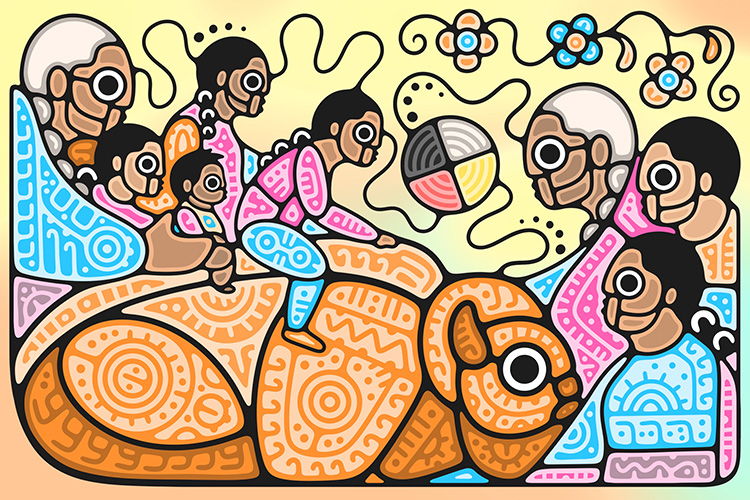September 30 is the National Day for Truth and Reconciliation
September 11, 2023
September 30 is the National Day for Truth and Reconciliation in Canada. It is a time to recognize and commemorate the intergenerational harm that residential schools caused to Indigenous families and communities, and to honour those who have been affected by this injustice.
We urge our members, staff and allies to take this opportunity to learn about, and reflect on, our past and how we can meaningfully participate in reconciliation in Canada.
The Truth and Reconciliation Commission and its Calls to Action
The Truth and Reconciliation Commission ran from 2008 to 2015, providing those directly or indirectly affected by the legacy of the Indian Residential Schools policy with an opportunity to share their stories and experiences. The Commission released its final report detailing 94 calls to action. The National Day for Truth and Reconciliation responds to Call to Action 80 from the Truth and Reconciliation Commission of Canada: Calls to Action, which reads:
80. We call upon the federal government, in collaboration with Aboriginal peoples, to establish, as a statutory holiday, a National Day for Truth and Reconciliation to honour Survivors, their families, and communities, and ensure that public commemoration of the history and legacy of residential schools remains a vital component of the reconciliation process.
The National Centre for Truth and Reconciliation (NCTR) has become the permanent archive for the statements, documents and other materials the Commission gathered, and its library and collections are the foundation for ongoing learning and research.
 Our 2023 National Day for Truth and Reconciliation artwork was created by Anishinaabe Onyota’a:ka artist, Tsista Kennedy (https://hotdogwaterart.com/.)
Our 2023 National Day for Truth and Reconciliation artwork was created by Anishinaabe Onyota’a:ka artist, Tsista Kennedy (https://hotdogwaterart.com/.)
When I first read the theme of "healing and care", as well as the theme of "remembering the children" being worked into this art, the image of this first draft immediately came to mind.
The bison is a common image I use in my artwork, and I often use it to portray healing, resiliency, and strength, and wellness. When the buffalo were brought to near extinction, we as Indigenous people struggled due to our diverse relationships with these animals, and the nourishment, shelter, and tools they provided us. Since colonization began, both the bison and we as Indigenous people have maintained our strength and resiliency, and now we both are growing in numbers once again. Because of this, I wanted the bison to be a place for the past generations, the children and elders, to rest upon.
The elder and children on the bison fit the theme of "remembering the children", but also represent the children and elders of the present day who will pass on and receive the traditional knowledge our ancestors succeeded in passing down to us. The individuals on the far right looking at these children and the elder represent those that support the children and the elders in any way they can, ensuring that they are doing their part in the passing down of our culture, wellbeing, and way of life. This is all connected by a medicine wheel, and some floral patterns in the top right corner, which to me represents new life, and continuity.
Tsista Kennedy, Anishinaabe Onyota’a:ka artist
Orange Shirt Day
Orange Shirt Day is a legacy of the St. Joseph Mission (SJM) Residential School (1891-1981) Commemoration Project and Reunion events that took place in Williams Lake, BC, Canada, in May 2013. The events were designed to commemorate the residential school experience, to witness and honour the healing journey of the survivors and their families, and to commit to the ongoing process of reconciliation.
Each year on September 30, people across Canada wear orange shirts to raise awareness of, and start a conversation around, the history and legacies of the residential school system in Canada. Watch the video at right to learn more about how Orange Shirt Day came to be and to listen to Phyllis Webstad's story.








No comments:
Post a Comment
Please leave a comment.